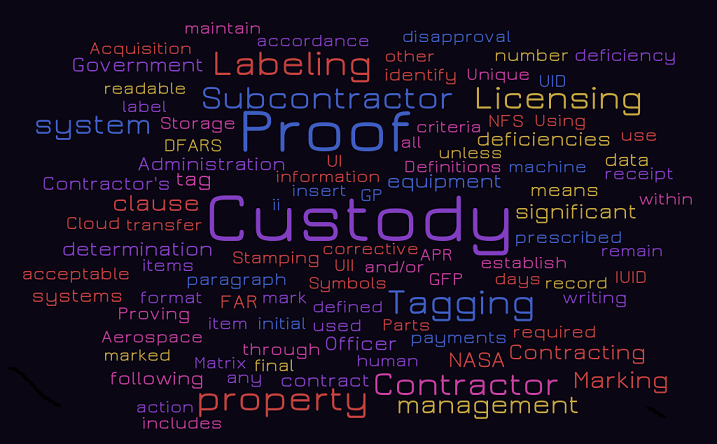There are three rules of federal government property regulation: custody, custody, custody. If it’s not nailed down, it has to be tracked. If you are doing any kind of work for the Federal government, the Department of Defense or NASA, you must have a robust system in place to mark property and keep a record of serial numbers in the cloud.
Other large institutions
If you are a state, county or local government; college, university or hospital system; corporation or large manufacturer, you also have a responsibility to keep track of everything in a manner commensurate with the current state of the art. Whether large or small, handwritten ledgers stored in filing cabinets or spreadsheets stored on computers in closets, are way out of compliance.
The smaller you get
Keeping track of property, until the advent of the internet, has been reserved for only the biggest players. Only these large institutions can afford a turnkey enterprise asset management (EAM) strategy. Now, there is a way for tiny government contractors, little defense subcontractors, small governments, mom & pop businesses, homeowners and individuals to keep track of their belongings, too. They can now tag their property with a globally unique identification number (UIN) and store serial numbers in the cloud just like the biggest players.
mypropertyidregistry.com/2017/09/22/enterprise-asset-management-miniaturized/
The gold standard of capital asset tracing
The federal government, the Department of Defense and NASA are the gold standard for capital asset tracing requirements. In order to be eligible for contracts, companies must follow very strict asset management principals for government furnished property (GFP). This includes affixing unique identification numbers (UIN), embedded in approved asset tags, and keeping a cloud-based record of the serial numbers. To not do so, you run the risk of contract termination, refusal to renew or possibly even an arrest on Federal charges.
Now available to the smallest players.
What was once seen as onerous and impossible to implement by smaller players, is now a thing of the past. By using the MyPropertyID strategy, the following regulations are now easily accessible by even the smallest organizations.
Core regulations that must be followed
Federal Acquisition Regulation
FAR 52.245-1 Government Property
https://www.acquisition.gov/content/52245-1-government-property
- (b)(2) The Contractor’s responsibility extends from the initial acquisition and receipt of property, through stewardship, custody, and use.
- (f)(1)(ii) Identify as Government owned in a manner appropriate to the type of property (e.g., stamp, tag, mark, or other identification).
Defense Federal Acquisition Regulation Supplement
DFARS 252.245-7001 Tagging, Labeling, and Marking of Government-Furnished Property.
www.acq.osd.mil/dpap/dars/dfars/html/current/252245.htm#252.245-7001
- (b) The Contractor shall tag, label, or mark Government-furnished property items.
252.204-7012 Safeguarding Covered Defense Information and Cyber Incident Reporting.
www.acq.osd.mil/dpap/dars/dfars/html/current/252204.htm#252.204-7012
- “Adequate security” means protective measures that are commensurate with the consequences and probability of loss, misuse, or unauthorized access to, or modification of information.
NASA FAR Supplement
NFS 1852.245–74 Identification and Marking of Government Equipment
prod.nais.nasa.gov/far/far0595-nfs012617/5245-end.htm
- (b) Equipment shall be marked in a location that will be human readable.
- (c) The Contractor shall provide (2) Unique Identification Number (License Tag).

